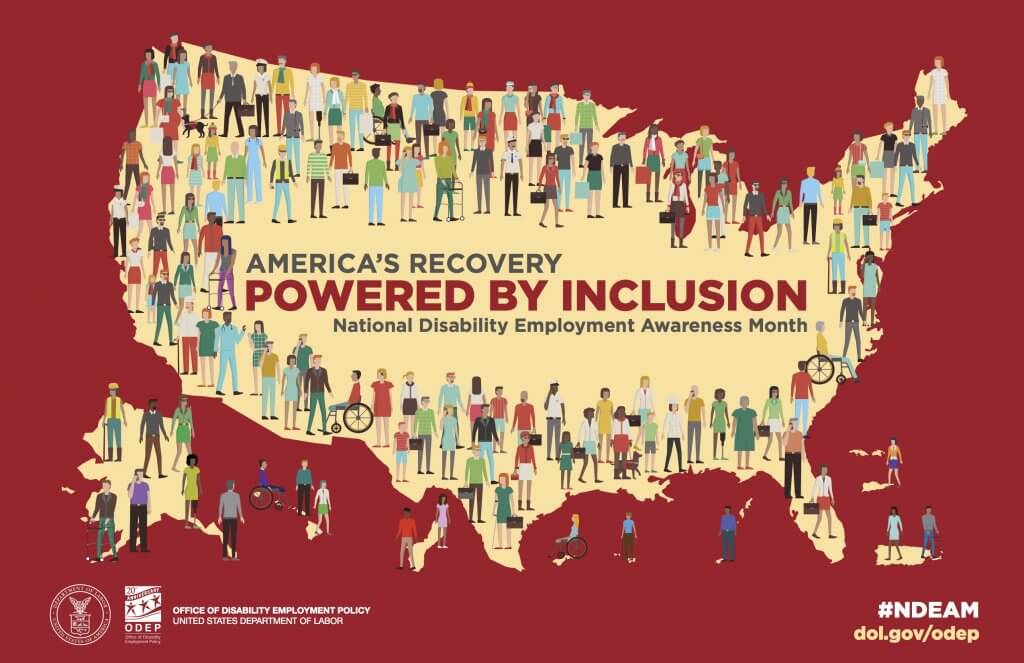Sgt. 1st Class Dean Sale, a former Army National Guardsman, permanently injured his back and knees in a parachuting exercise. So in his post-military career, he turned to vocational training.
Today, he works at an Arizona charter school that is “very deliberate” about hiring veterans.
“Because of the discipline, the training, the things we learned in the military, being a veteran — even a disabled veteran — is a great asset,” he said. “The things I learned in the Army are very valuable to teaching, like discipline and working as a team.”
Sale is among those who labor and military support organizations are drawing attention to as part of National Disability Employment Awareness Month.
Held every October, the awareness campaign celebrates contributions that disabled employees make across the American workforce. It also encourages employers to hire those employees. In that spirit, this year’s theme is “America’s Recovery: Powered by Inclusion.”
Disabled veterans report service-connected injuries
That’s a motto that Ellice Switzer’s employer takes very seriously. As an extension associate with Cornell University’s Yang-Tan Institute on Employment and Disability, Switzer regularly educates businesses and bosses on the ins and outs of employing people with disabilities.
“We get a lot of employers reaching out to us around this time of year, wanting to know what they can do,” Switzer said. “Even if it’s the only time all year they’ve thought about disability and employment, it provides us the opening to engage them in that dialogue.”
The category of American workers with disabilities includes veterans who have one or more special needs. Nationwide, almost 30% of the 12 million veterans ages 21-64 report having a disability. More than 19% of these veterans’ disabilities are connected to their time in active duty and/or National Guard or Reserve, meaning that millions of former military members are facing unique lifelong difficulties beyond their original sacrifice.
These difficulties include finding and/or maintaining employment. The latest employment data shows that, like every other facet of life since March 2020, it’s been a rough 19 months.
Jeremy Villanueva, assistant national legislative director for Disabled American Veterans, testified before the Committee on Veterans’ Affairs in the House of Representatives on the topic earlier this year.
“When 2019 came to a close, the veteran unemployment rate was the best it had been since the Great Recession… It was clear that the economic outlook for veterans was the best it had been in over a decade,” he said in May. “However, as COVID-19 took hold… all of the previous gains quickly vanished.”
Gulf War-era veterans with a 60% or higher disability rating, for example, have an unemployment rate of nearly 12% as of April 2021. However, employers have numerous motivations to hire disabled veterans, including tax incentives, assistive technology and partial salary reimbursement. National Guard and Reserve members are currently faring slightly better than most veterans, having a 7% higher chance of being employed in a post-COVID world than vets who had never been Guardsmen or Reservists.
Veterans bring ‘maturity’ to civilian workforce
Switzer echoed Sale’s sentiments, saying that the current economic landscape should inspire, rather than terrify, disabled veterans.
“There’s lot to be optimistic about in terms of the proliferation of registered apprenticeship programs,” she said. “I think people should be on the lookout for new opportunities, new training and new pathways toward jobs they may not have considered before.”
Above all, she said, disabled veterans should remember that they still have options and support in their job searches —and so much to offer employers.
“There’s maturity in a veteran you don’t always find among the civilian population,” she said. “If you’re hiring a college graduate at 22, your onboarding process is going to include how to show up on time or interact with a boss.
“But you don’t have to teach that to a veteran.”
For more information or resources for disabled veterans, visit the DAV website.
Editor’s note: An earlier version of this article incorrectly stated the name of the Yang-Tan Institute on Employment and Disability and Ellice Switzer’s title. It has since been corrected.

